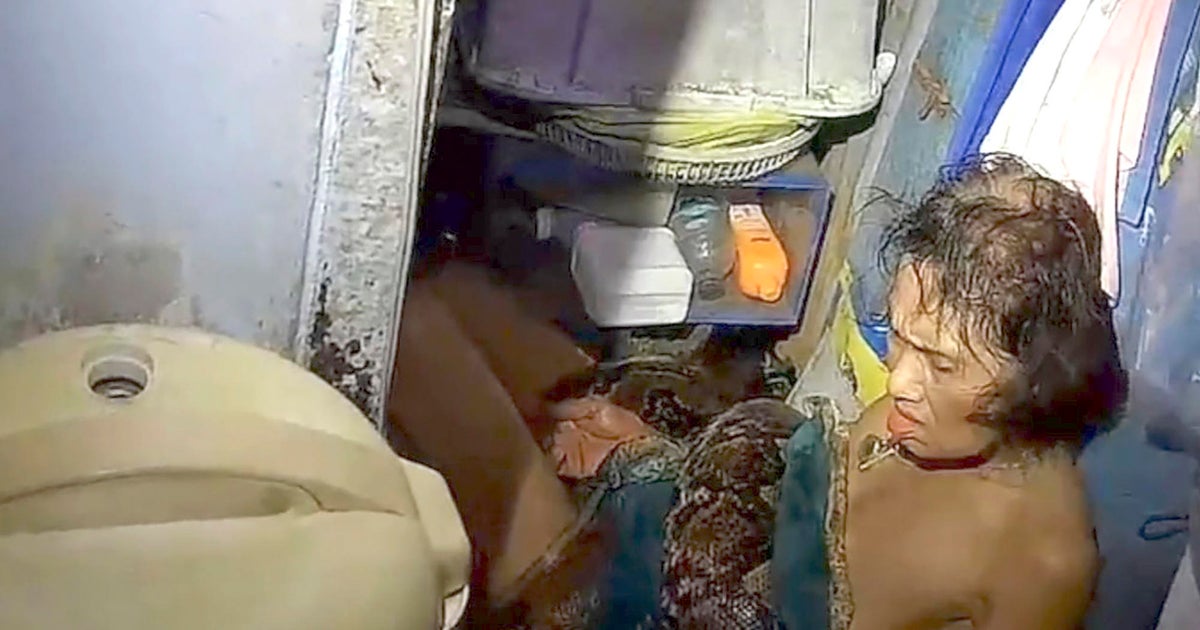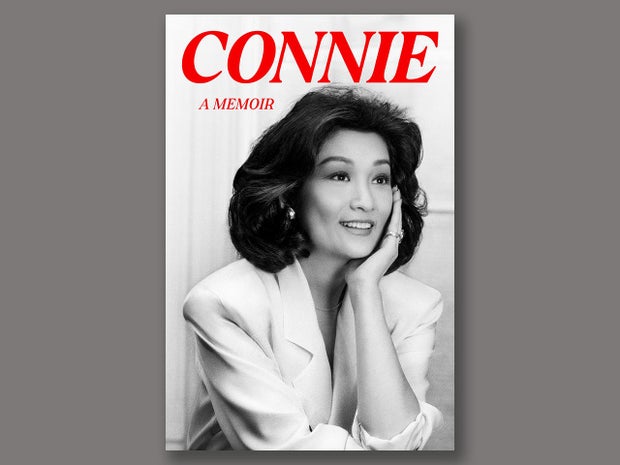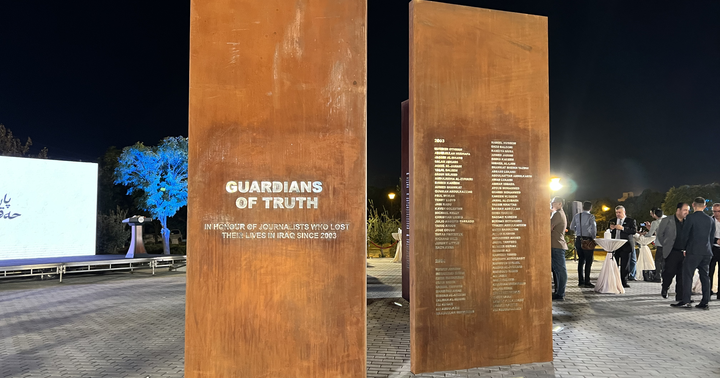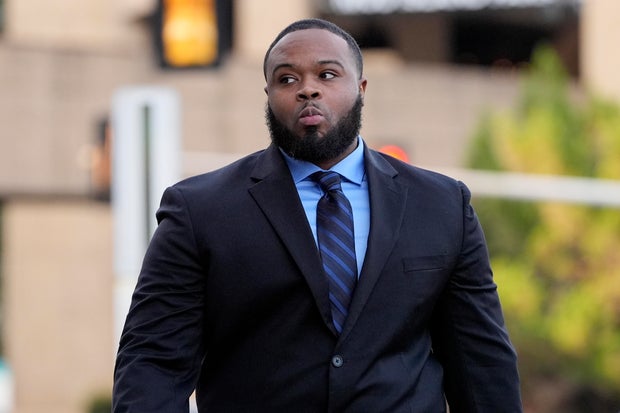CBS News
Book excerpt: “Connie: A Memoir” by Connie Chung

Grand Central Publishing
We may receive an affiliate commission from anything you buy from this article.
In “Connie: A Memoir” (to be published September 17 by Grand Central), veteran journalist Connie Chung writes about a four-decade career in which she broke through barriers in the male-dominated field of broadcast news, becoming the first Asian woman to co-anchor a nightly network news broadcast.
Read an excerpt below, and don’t miss Jane Pauley’s interview with Connie Chung on “CBS Sunday Morning” September 15!
“Connie: A Memoir” by Connie Chung
Prefer to listen? Audible has a 30-day free trial available right now.
Good Girl/Bad Girl
Like so many working women in the 1970s, I strove to be the good girl, the Goody Two-shoes. I listened earnestly and obeyed the orders of my superiors or those who supposedly knew better. As if being female weren’t enough, I was also Chinese, meaning that in me, CBS got a double dose of obedient, respectful, and dutiful.
However, there was another side of me that the men did not anticipate, that left them puzzled. I was like the girl Henry Wadsworth Longfellow described in his poem “There Was a Little Girl”:
When she was good,
She was very very good,
And when she was bad she was horrid.
Well, maybe not horrid. Let’s say snarky.
The devil-may-care baddie (who sat on my left shoulder) would taunt the goody (who placed herself on my right shoulder) for being stuffy and urge her to say anything that popped into her head. But the good girl resisted because she knew better.
The good journalist diligently did her job. Men in politics and government at the White House, Capitol Hill, the Pentagon, and the State Department would size me up from head to toe and greet me with a look as if I were an ice-cream cone or a little china doll. Newsmakers I approached for interviews often toyed with me. When I caught up with Nixon’s Attorney General John Mitchell on Capitol Hill, he said as cameras rolled, “You look just as pretty as ever.” Did he expect me to smile and thank him? I was there to do my job and proceeded with my questions. Same with Secretary of State Henry Kissinger. As I approached him with my microphone in hand, he’d flirt. There was little I could do or say to avoid those creepy old men.
But if I knew the men, I was the sassy bad girl. Before the dude could toss a sexual innuendo or racist remark at me, my modus operandi was to lob a preemptive strike. I did it to him before he could do it to me. The male would be so darn shocked, he’d laugh nervously. I am not saying my approach is advisable, but I owned it, and soon those who dealt with me knew that I could get to the bad side—faster, better, and funnier than they could. It worked. They would not mess with me when I was willing to offend first, then laugh it off.
If a man made a play for me, subtle or overt, I looked him in the eye and dismissed him. A swift “In your dreams” or blunt “Don’t even think about it.” “You are out of your league.” “You must be hard up.” A serious, quizzical “Really?” shut it down.
Never would I run to the ladies’ room crying and shaking. A toughie, I determined there was no crying in news, just the way, years later, Tom Hanks shouted at his all-female team in A League of Their Own: “There is no crying in baseball!”
Maybe someone can figure out if being the only Asian reporter was a help or a hindrance. I still don’t know. There was no doubt that the racism I experienced was as reprehensible as the sexism. Those who called me “dragon lady” or said to me, “You slant the news” or called my reporting “yellow journalism” thought they were so clever. Even men I knew would allude to my being Chinese, thinking it was funny. One referred to me as “OSE”—”Ole Slant Eyes.” Another asked, “Where are you staying? Is it near Chinatown?”
At daily White House press briefings, an Episcopal priest, Lester Kinsolving, would shout outlandish questions at the press secretary from the back of the room. He worked for various small newspapers but was considered a pesky gadfly.
One day, as I sat in the White House press room, Lester asked me, “Is it true what they say about Asians?”
I snapped back with remarkable haste, “Is it true what they say about priests?”
I don’t know what “they” say about Asians or priests but it didn’t matter, he was speechless.
Whether it was sexism or racism, I’d beat them to the punch with a self-deprecating joke. One time, CBS News Bureau Chief Bill Small said to me, “Tell them why I hired you.” I don’t know what possessed me to reply quickly, “You like the way I do your shirts.” Bill laughed uproariously. He repeated that story for years.
My approach to these derogatory remarks was the only way I could handle them at the time. It was tiresome and insulting, but I lived with it. If I’d obsessed about the issue, I could not have done my job.
In those early days at CBS, I was often saddled with light features and women’s stories like an art exhibition, toy safety at Christmas, and new orangutans at the National Zoo. I lumped it, figuring that’s what reporters had to do to earn their stripes. But there was something about covering a dreaded First Lady Pat Nixon nonevent that made all reporters, including the men, cringe. The guys refused, but I didn’t have the chutzpah to turn down an assignment.
Somebody had to cover First Lady events as protective coverage—just in case something happened. She was a nice lady, but she had a stiff, fixed smile, as if she was the long-suffering political wife which she was. Would anything she was doing really make news?
Eager to make something of what I knew was nothing, I would think of a question that might elicit a comment. Unfortunately for me, Mrs. Nixon would reply with a pithy sound bite. My reward? I was sent to cover her again and again.
On December 1, 1971, the First Lady went Christmas shopping with her daughter Julie, three months before the president’s historic visit to China. I asked Mrs. Nixon about her plans for the trip. She revealed that a friend had been teaching her Chinese. That bit of “news” made it onto Cronkite’s broadcast that evening.
About two weeks later, Mrs. Nixon gave reporters a tour of the White House Christmas decorations. Naturally, I was sent to cover it. I asked her to say something in Chinese. She laughed. “Oh no. You’re an expert. I don’t dare practice in front of you.” I pressed on, graciously but insistently. She demurred again.
What precipitated Nixon’s extraordinary China trip was a simple exchange of table tennis players between the two superpowers. Those matches were known as “Ping-Pong diplomacy”—games that thawed relations and created a breakthrough in talks with China. I did not ask to cover the visiting Chinese Ping-Pong players. I was assigned to cover them, probably because I spoke Chinese.
But later, I was also assigned to cover the arrival of the Chinese pandas at the National Zoo, a gift from the People’s Republic of China to the US. Why did that story end up in my lap? The possibility that the pandas might understand my Chinese was not likely.
When it came time for President Nixon’s historic trip to China, This time, I thought, how about if I do to them what they did to me? I will play the race card. I pushed to be sent. My pleas were for naught. Too many CBS News executives were shamelessly angling to get their names on the trip manifest. The Washington Star newspaper in DC even noted the absurdity of my absence, saying CBS was “the only network with a Chinese American correspondent, Connie Chung, [who] would seem to be a natural choice, but apparently she was shanghaied somewhere along the line.”
I watched on television as Nixon opened the doors to China after two decades of Cold War isolation. I could not help but chortle when President Nixon made an all-too-obvious comment as he stood before China’s Great Wall and declared, “I think that you have to conclude that this is a great wall.”
The president’s success in normalizing relations with China had more of a personal impact on me than a professional one. My father had not been able to write to our relatives in China for more than twenty-five years. My parents did not know who was still alive. Letters flowed again, but my parents kept what they discovered to themselves, probably because none of it was good news.
* * *
While China and diplomacy were left to experienced CBS correspondents, I was frequently sent with a camera crew on what were called “stakeouts,” in which I’d ambush someone with questions while cameras were rolling. I begrudgingly did what I was asked, even though I agreed with CBS News State Department correspondent Marvin Kalb, who took me aside one day and said, “Stake-outs are not reporting.” They were all about nabbing a sought-after interviewee, catching him off guard, and confronting him with a question he had been avoiding. It was known as “gotcha journalism.” Mike Wallace of CBS’s 60 Minutes perfected gotcha moments in which his victims would squirm.
I was assigned to “get” Deputy Attorney General Richard Kleindienst when his nomination for the top job at the Justice Department was thrown into doubt over an antitrust deal.
One day, after his confirmation hearings were gaveled to a close, I ran outdoors to link up with a camera crew. I asked Kleindienst three questions. Each time, he answered with a version of “I don’t wish to comment,” all the while smiling, chuckling, and laughing.
Not content with his non-answers, the crew and I gave chase on a raucous ride ten miles out of Washington to suburbia and the Burning Tree Club in Bethesda, Maryland. When Kleindienst ran into the golf club’s front door, I was right behind him, following on his heels. The door slammed behind him, right in my face.
Undaunted, I burst into the lobby of the club. Much to my surprise, I was unceremoniously ejected. I felt like a character in a Bugs Bunny animated cartoon being bounced out the front door, tumbling and rolling in a ball, head over heels, down the driveway. I thought I was being booted because I was an inquiring reporter. But the actual reason was that the club was the exclusive domain of men. Burning Tree remains men only to this day.
The next day, I was once again poised to question Kleindienst, this time outside the hearing room. I was pleasantly surprised when he stopped and calmly answered every question I asked. Cronkite was mighty proud of my exclusive. That night, the CBS Evening News ran three long minutes of my interview, prized real estate on the broadcast.
I always thought Kleindienst stopped to answer my questions because he wanted to reward my doggedness. Maybe not.
Some fifty years later, at our yearly lunch, Lesley Stahl, my buddy from those CBS News days, remembered that Kleindienst interview completely differently. Lesley said she vividly remembers watching my first Q and A on television with the rest of us in the CBS newsroom, when he laughed off my questions. She believed Kleindienst knew he was seen unfavorably by the public and felt compelled to rectify his behavior the next day by cooperating with me instead of blowing me off. Lesley said it was a rude awakening for all male interviewees that they had to take all reporters seriously, including and especially female reporters.
An excerpt from “Connie: A Memoir,” to be published on September 17, 2024. Copyright © 2024 by Connie Chung. Used by arrangement with Grand Central Publishing. All rights reserved.
Get the book here:
“Connie: A Memoir” by Connie Chung
Buy locally from Bookshop.org
For more info:
- “Connie: A Memoir” by Connie Chung (Grand Central Publishing), in Hardcover, eBook and Audio formats, available September 17
See also:
CBS News
CIA officer who drugged, photographed and sexually assaulted dozens of women gets 30 years in prison as victims stare him down

A longtime CIA officer who drugged, photographed and sexually assaulted more than two dozen women in postings around the world was sentenced to 30 years in federal prison Wednesday after an emotional hearing in which victims described being deceived by a man who appeared kind, educated and part of an agency “that is supposed to protect the world from evil.”
Brian Jeffrey Raymond, with a graying beard and orange prison jumpsuit, sat dejectedly as he heard his punishment for one of the most egregious misconduct cases in the CIA’s history. It was chronicled in his own library of more than 500 images that showed him in some cases straddling and groping his nude, unconscious victims.
“It’s safe to say he’s a sexual predator,” U.S. Senior Judge Colleen Kollar-Kotelly said in imposing the full sentence prosecutors had requested. “You are going to have a period of time to think about this.”
Prosecutors say the 48-year-old Raymond’s assaults date to 2006 and tracked his career in Mexico, Peru and other countries, all following a similar pattern.
He would lure women he met on Tinder and other dating apps to his government-leased apartment and drug them while serving wine and snacks. Once they were unconscious, he spent hours posing their naked bodies before photographing and assaulting them. He opened their eyelids at times and stuck his fingers in their mouths.
U.S. Embassy and Consulates in Mexico
One by one, about a dozen of Raymond’s victims who were identified only by numbers in court recounted how the longtime spy upended their lives. Some said they only learned what happened after the FBI showed them the photos of being assaulted while unconscious.
“My body looks like a corpse on his bed,” one victim said of the photos. “Now I have these nightmares of seeing myself dead.”
One described suffering a nervous breakdown. Another spoke of a recurring trance that caused her to run red lights while driving. Many told how their confidence and trust in others had been shattered forever.
“I hope he is haunted by the consequences of his actions for the rest of his life,” said one of the women, who like others stared Raymond down as they walked away from the podium.
Reading from a statement, Raymond told the judge that he has spent countless hours contemplating his “downward spiral.”
“It betrayed everything I stand for and I know no apology will ever be enough,” he said. “There are no words to describe how sorry I am. That’s not who I am and yet it’s who I became.”
In October 2021, the FBI issued a notice to the public, seeking other potential victims of and additional information about Raymond, saying that some women depicted in the incriminating photos and videos remain unidentified.
In a statement Wednesday, authorities praised all the victims who came forward.
“The FBI thanks the brave women who shared information that furthered this investigation,” said
FBI Assistant Director in Charge David Sundberg of the Washington Field Office. “We recognize our domestic and foreign law enforcement partners who helped bring Raymond to justice for his reprehensible crimes.”
Raymond’s sentencing comes amid a reckoning on sexual misconduct at the CIA. The Associated Press reported last week that another veteran CIA officer faces state charges in Virginia for allegedly reaching up a co-worker’s skirt and forcibly kissing her during a drunken party in the office.
Still another former CIA employee – an officer trainee – is scheduled to face a jury trial next month on charges he assaulted a woman with a scarf in a stairwell at the agency’s Langley, Virginia, headquarters. That case emboldened some two dozen women to come forward to authorities and Congress with accounts of their own of sexual assaults, unwanted touching and what they contend are the CIA’s efforts to silence them.
And yet the full extent of sexual misconduct at the CIA remains a classified secret in the name of national security, including a recent 648-page internal watchdog report that found systemic shortcomings in the agency’s handling of such complaints.
“The classified nature of the activities allowed the agency to hide a lot of things,” said Liza Mundy, author of “Sisterhood: The Secret History of Women at the CIA.” The male-dominated agency, she said, has long been a refuge for egregious sexual misconduct. “For decades, men at the top had free rein.”
CIA has publicly condemned Raymond’s crimes and implemented sweeping reforms intended to keep women safe, streamline claims and more quickly discipline offenders.
Last year, the CIA announced the appointment of Dr. Taleeta Jackson, a seasoned psychologist who previously led the Sexual Assault Prevention Program at the U.S. Navy, as the new head of a dedicated sexual assault and prevention office at CIA.
“There is absolutely no excuse for Mr. Raymond’s reprehensible, appalling behavior,” the agency said Wednesday. “As this case shows, we are committed to engaging with law enforcement.”
But a veil of secrecy still surrounds the Raymond case nearly four years after his arrest. Even after Raymond pleaded guilty late last year, prosecutors have tiptoed around the exact nature of his work and declined to disclose a complete list of the countries where he assaulted women.
Still, they offered an unbridled account of Raymond’s conduct, describing him as a “serial offender” whose assaults increased over time and become “almost frenetic” during his final CIA posting in Mexico City, where he was discovered in 2020 after a naked woman screamed for help from his apartment balcony.
U.S. officials scoured Raymond’s electronic devices and began identifying the victims he had listed by name and physical characteristics, all of whom described experiencing some form of memory loss during their time with him.
One victim said Raymond seemed like a “perfect gentleman” when they met in Mexico in 2020, recalling only that they kissed. Unbeknownst to the woman, after she blacked out, he took 35 videos and close-up photos of her breasts and genitals.
“The defendant’s manipulation often resulted in women blaming themselves for losing consciousness, feeling ashamed, and apologizing to the defendant,” prosecutors wrote in a court filing. “He was more than willing to gaslight the women, often suggesting that the women drank too much and that, despite their instincts to the contrary, nothing had happened.”
Raymond, a San Diego native and former White House intern who is fluent in Spanish and Mandarin, ultimately pleaded guilty to four of 25 federal counts including sexual abuse, coercion and transportation of obscene material. As part of his sentence, the judge ordered him to pay $10,000 to each of his 28 victims.
Raymond’s attorneys had sought leniency, contending his “quasi-military” work at the CIA in the years following 9/11 became a breeding ground for the emotional callousness and “objectification of other people” that enabled his years of preying upon women.
“While he was working tirelessly at his government job, he ignored his own need for help, and over time he began to isolate himself, detach himself from human feelings and become emotionally numb,” defense attorney Howard Katzoff wrote in a court filing.
“He was an invaluable government worker, but it took its toll on him and sent him down a dark path.”
CBS News
Python squeezes Thai woman in her kitchen for 2 hours before she’s rescued by police

Bangkok — A 64-year-old woman was preparing to do her evening dishes at her home outside Bangkok when she felt a sharp pain in her thigh and looked down to see a huge python taking hold of her.
“I was about to scoop some water and when I sat down it bit me immediately,” Arom Arunroj told Thailand’s Thairath newspaper. “When I looked I saw the snake wrapping around me.”
The 13-to-16-foot-long python coiled itself around her torso, squeezing her down to the floor of her kitchen.
“I grabbed it by the head, but it wouldn’t release me,” she said. “It only tightened.”
Kunyakit Thanawtchaikun/AP
Pythons are non-venomous constrictors, which kill their prey by gradually squeezing the breath out of it.
Propped up against her kitchen door, she cried for help but it wasn’t until a neighbor happened to be walking by about an hour and a half later and heard her screams that authorities were called.
Responding police officer Anusorn Wongmalee told The Associated Press on Thursday that when he arrived the woman was still leaning against her door, looking exhausted and pale, with the snake coiled around her.
Police and animal control officers used a crowbar to hit the snake on the head until it released its grip and slithered away before it could be captured.
In all, Arom spent about two hours on Tuesday night in the clutches of the python before being freed.
She was treated for several bites but appeared to be otherwise unharmed in videos of her talking to Thai media shortly after the incident.
Encounters with snakes are not uncommon in Thailand, and last year 26 people were killed by venomous snake bites, according to government statistics. A total of 12,000 people were treated for venomous bites by snakes and other animals 2023.
The reticulated python is the largest snake found in Thailand and usually ranges in size from 5 to 21 feet, weighing up to about 165 pounds. They have been found as big as 33 feet long and 287 pounds.
Smaller pythons feed on small mammals such as rats, but larger snakes switch to prey such as pigs, deer and even domestic dogs and cats. Attacks on humans are not common, though do happen occasionally.
There have also been fatal attacks in Indonesia, where a woman was found inside the belly of a reticulated python that swallowed her whole in June — the fifth person to be devoured by one of the snakes in the country since 2017.
CBS News
After Tyre Nichols’ fatal beating, Memphis officer texted photo of bloodied man to ex-girlfriend, she testifies

A former Memphis police officer charged in the fatal beating of Tyre Nichols sent his ex-girlfriend a photo of the badly injured man on the night he was punched, kicked and hit with a police baton following a traffic stop, according to trial testimony Wednesday.
Brittany Leake, a Memphis officer and Demetrius Haley’s former girlfriend, testified during the criminal trial that she was on the phone with Haley when officers pulled Nichols over for a traffic stop. She said she heard a “commotion,” including verbal orders for someone to give officers his hands.
The call ended, but Haley later texted the photo in a group chat comprising Haley, Leake and her godsister, she testified. Prosecutors displayed the photo for the jury. It showed Nichols with his eyes closed, on the ground with what appeared to be blood near his mouth and his hands behind his back.
Leake said that when she saw the photo, her reaction was: “Oh my God, he definitely needs to go to the Med.”
The Med is shorthand for Memphis’ trauma hospital.
The fatal beating, caught on police bodycams and street surveillance cameras, has sparked protests and calls for police reform. Officers said they pulled over Nichols for reckless driving, but Memphis’ police chief said there was no evidence to substantiate that claim.
Haley, Tadarrius Bean and Justin Smith are on trial after pleading not guilty to charges that they deprived Nichols of his civil rights through excessive force and failure to intervene, and obstructed justice through witness tampering. Their trial began Sept. 9 and is expected to run three to four weeks.
George Walker IV / AP
The Memphis Police Department fired the three men, along with Emmitt Martin III and Desmond Mills Jr., after Nichols’ death. The beating was caught on police video, which was released publicly. The officers were later indicted on the federal charges. Martin and Mills have taken plea deals.
During her testimony Wednesday, Leake said she deleted the photo after she saw it and that sending such a photo is against police policy.
“I wasn’t offended, but it was difficult to look at,” she said.
Leake said Haley had sent her photos before of drugs, and of a person who had been injured in a car accident.
Earlier Wednesday, Martin was on the witness stand for a third day. Defense attorneys tried to show inconsistencies between Martin’s statements to investigators and his court testimony. Martin acknowledged lying about what happened to Memphis Police Department internal investigators, to try to cover up and “justify what I did.”
But Martin said he told the truth to FBI investigators after he pleaded guilty in August, including statements about feeling pressure on his duty belt where his gun was located during the traffic stop, but not being able to see if Nichols was trying to get his gun. Martin has testified that he said “let go of my gun” during the traffic stop.
Martin Zummach, the attorney for Justin Smith, asked Martin if he knew of any reasons why Nichols did not simply say, “I give up.”
“He’s out of it,” Martin said. “Disoriented.”
Martin testified that the situation escalated quickly when Haley pulled his gun and violently yanked Nichols from his car, using expletives and failing to tell Nichols why he had been pulled over and removed from the vehicle.
“He never got a chance to comply,” Martin said.
Nichols, who was Black, was pepper sprayed and hit with a stun gun during the traffic stop, but ran away, police video shows. The five officers, who also are Black, then beat him about a block from his home, as he called out for his mother.
Video shows the officers milling about and talking as Nichols struggled with his injuries. Nichols died Jan. 10, 2023, three days after the beating.
An autopsy report shows Nichols – the father of a boy who is now 7 – died from blows to the head. The report describes brain injuries, and cuts and bruises on his head and elsewhere on his body.
Jesse Guy testified that he was working as a paramedic for the Memphis Fire Department the night of the beating. He arrived at the location after two emergency medical technicians, Robert Long and JaMichael Sandridge.
Guy said he was not told about the medical problems Nichols had experienced before he arrived, and that Nichols was injured, seated on the ground and unresponsive.
Nichols had no pulse and was not breathing, and it “felt like he was lifeless,” Guy said.
In the ambulance, Guy performed CPR and provided mechanical ventilation, and Nichols had a pulse by the time he arrived at the hospital, the paramedic said.
Guy said Long and Sandridge did not say if they had checked Nichols’ pulse and heart rate, and they did not report if they had given him oxygen. When asked by one of Bean’s lawyers whether that information would have been helpful in treating Nichols, Guy said yes.
Long and Sandridge were fired for violating fire department policies after Nichols died. They have not been criminally charged.
The five officers also have been charged with second-degree murder in state court, where they pleaded not guilty. Mills and Martin are expected to change their pleas.
Federal prosecutors have previously recommended a 40-year sentence for Martin. A date has not been set in state court yet.
Nichols worked for FedEx, and he enjoyed skateboarding and photography. The city of Sacramento, where Nichols grew up, named a skatepark in his honor. “Tyre fell in love with skateboarding at a young age and it wasn’t long before it became a part of his lifestyle,” states the resolution approved by the city council. He had a tattoo of his mother’s name.
“Tyre Nichols’ family have been praying for justice and accountability from the very beginning of this tragedy,” Ben Crump and Antonio Romanucci, the civil rights attorneys representing Nichols’ family, said in a statement when the trial began.











